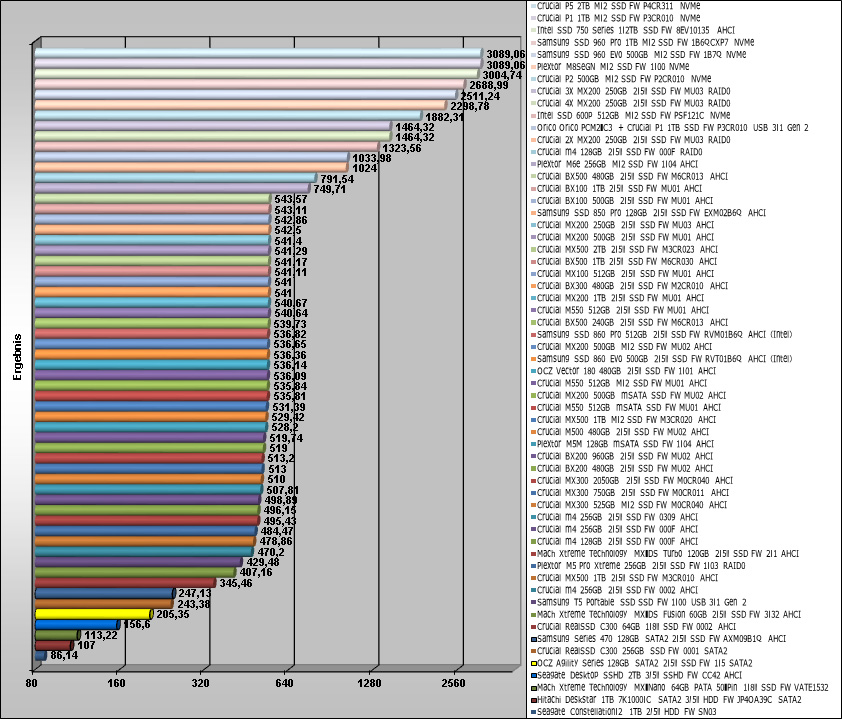
Let us continue with the benchmark results. SATA2 drives are currently tested with an ASRock M3A790GXH/128M motherboard and SATA3 drives are currently tested with an ASRock 890GX Extreme3 motherboard. At present, Microsoft Windows 7 Ultimate Edition is used as the operating system.
The SSD drive speed was examined and compared with the following benchmark software:
AS SSD Benchmark 1.4.3704.27281 – Download
ATTO Disk Benchmark v2.46 – Download
CrystalDiskMark 3.00 – Download
HD Tach 3.040 – Download
SiSoftware Sandra 2010c – Download
The SSD benchmark values offers a very good reference point of the maximal possible reading and writing performance, the speed with smaller files and the respective access time. The 64GB Crucial drive achieved above all an amazing high sequential read rate. With approximately 331 MB/s, the maximum transfer rate of the Serial ATA 2.0 interface was exceeded, so that a SATA3 interface is really the best choice for this SSD. The write performance was approximately 76 MB/s, which is much lower than the result of the bigger 256GB 2.5″ C300 RealSSD with about 211 MB/s tested in the previous review. The overall score reached very good 251 points, because for example the OCZ Agility 120GB SATA2 SSD reached only 138 points.
Here is a Snipping screenshot of the AS SSD benchmark results (SATA3 IDE):
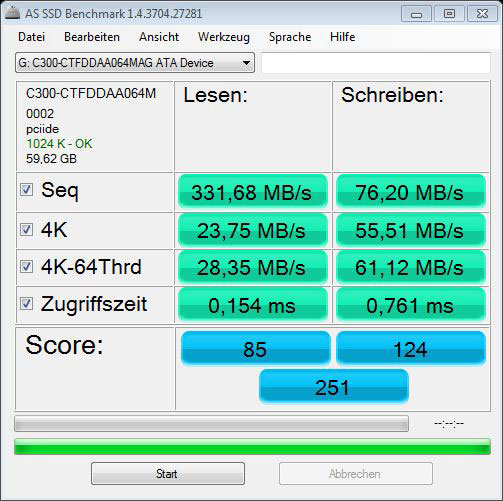
In AHCI mode one result is much higher than in the IDE mode and that is the important value “4K-64Thrd”. 4K means that small 4K blocks are read and/or written and with the 4K 64Thrd this is distributed on 64 Threads at the same time. Thus the benchmark program simulate for example a typical program start. Since the weighting of this value is very high in the ASSSD benchmark tool, it increases the total score in AHCI mode with 466 points very high.
Hint: Who think now about changing its SATA port in the BIOS from native IDE and/or legacy IDE to AHCI, should change first for example (if possible) only one part of the SATA port, where the drive with the operating system is not installed. Because if one like to save the new Windows installation, one must install the hard disk controller driver before changing SATA mode from IDE to AHCI – alternatively there are also Registry entries for it. Of course we help you with questions to this topic or all other PC related questions at any time 24/7 in our PC Forum.
Here is a Snipping screenshot of the AS SSD benchmark results (SATA3 AHCI):
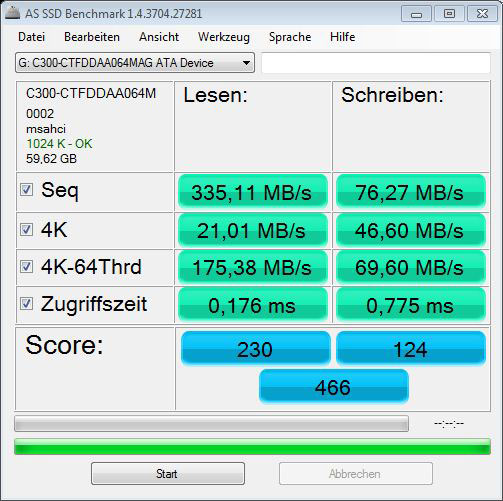
Here is a Snipping screenshot of the AS SSD iops results to measure the input/output speed (SATA3 IDE):
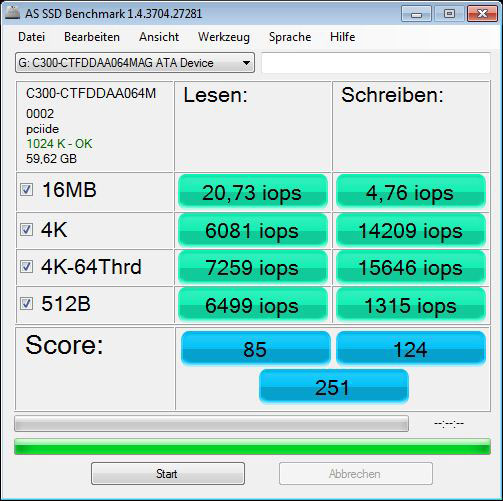
And here is a Snipping screenshot of the AS SSD iops results to measure the input/output speed (SATA3 in AHCI mode):
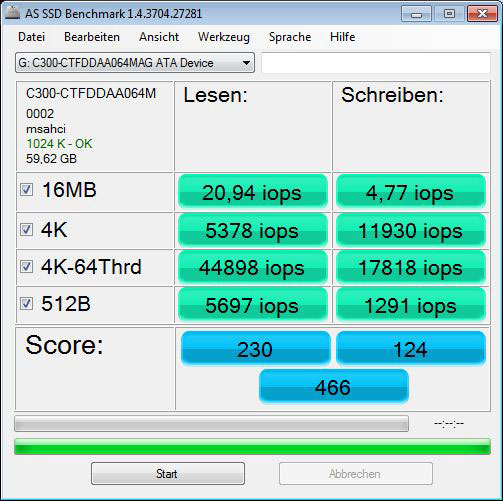
The comparison of the AS SSD benchmark results is extended with each new HDD/SSD test. Here we see the OCZ Agility 128GB SATA2 SSD in comparison to the Crucial RealSSD C300 64GB 1,8″ SSD in IDE and in AHCI mode and a comparison to the Crucial RealSSD C300 256GB 2,5″ SSD on a SATA-3 controller and on a SATA-2 controller, whereby the diagram is updated shortly with new SSDs.
Here is a comparison of the AS SSD benchmark values, which are getting updated with soon coming drives:
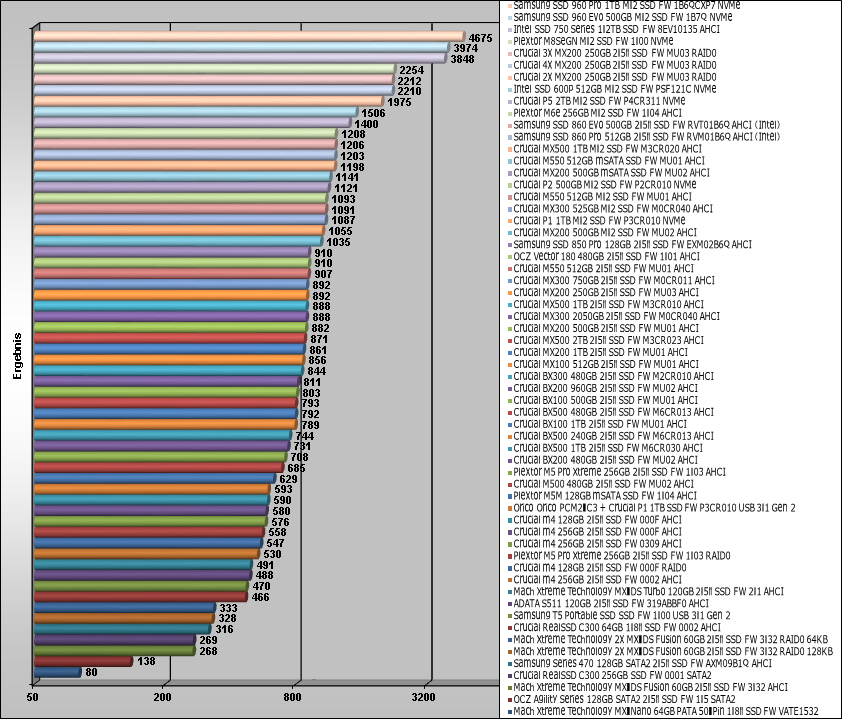
The ATTO disk benchmark values gives a very good overview about the write and read rate on different file sizes. With approx. 80 MB/s, the write performace of higher transfer sizes is relatively low, but the result of the reading speed is with approx. 350 MB/s starting from 64 KB transfer size is enormously high.
Here is a Snipping screenshot of the ATTO Disk benchmark values (SATA3):
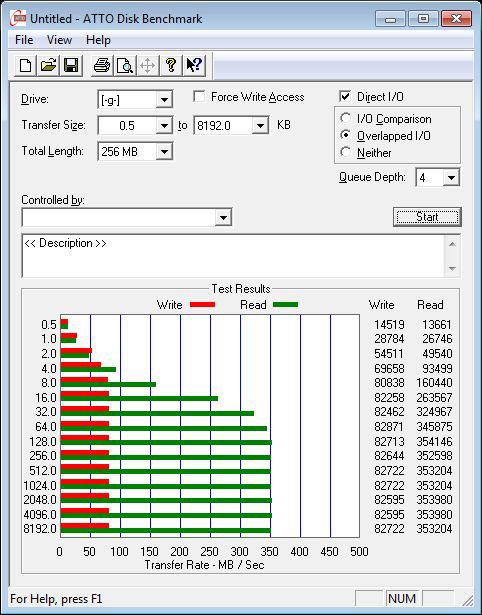
Compared to this result, the read performance in AHCI mode is increased with all transfer sizes. Here we see can see a very good comparison of the conventional native IDE mode and the modern AHCI mode, which offers beside the higher performance also advantages like e.g. the support of NCQ (Native Command Queuing) or Hot-Plug.
Here is a Snipping screenshot of the ATTO Disk benchmark values (on SATA3 AHCI):
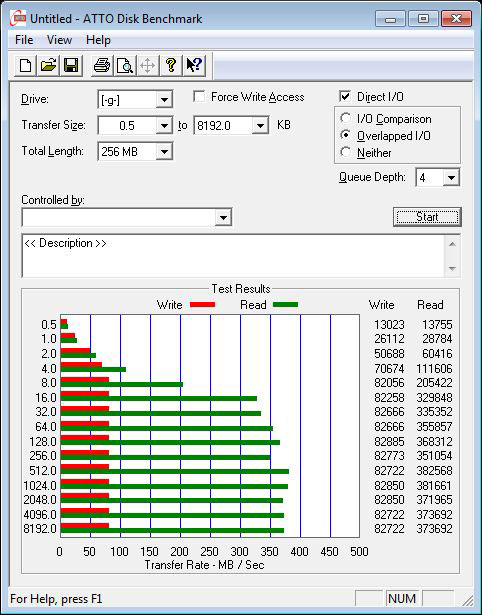
The ATTO disk benchmark values are compared with a small transfer size of 32KB and a large transfer size of 8192KB. The bar chart already shows a first comparison to the Hitachi Deskstar 7K1000.C 1TB hard disk drive, the OCZ Agility 120GB SSD and the Crucial 256GB C300 RealSSD, whereby the best result is reached by Crucial’s 64GB 1,8″ C300 RealSSD in IDE and in AHCI. But the write result reached only the slowest performance.
Here is a comparison of the ATTO disk benchmark values, which are getting updated with soon coming drives:
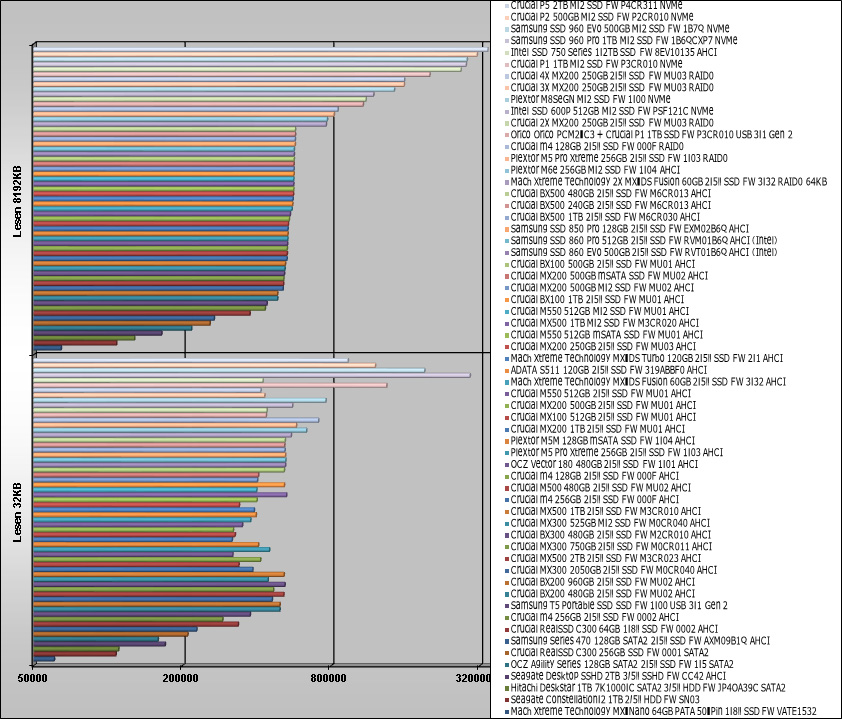
With CrystalDiskMark one receives a balanced measurement of the performance with different transfer sizes.
Here is a Snipping screenshot of the CrystalDiskMark values (SATA3):
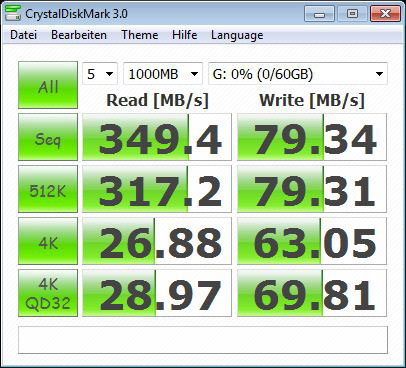
As seen in the previous 4K-64Threads results, the 4K QD32 is much higher when operating in AHCI mode.
Here is a Snipping screenshot of the CrystalDiskMark values (SATA3 AHCI):
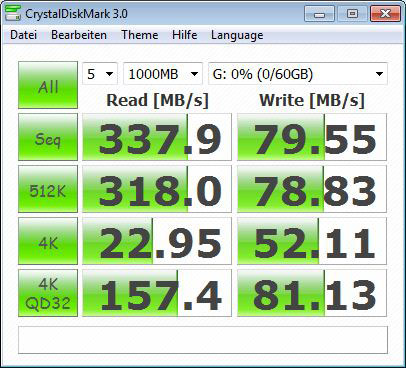
The following diagram shows the CrystalDiskMark results once again compared with other SSDs and platter drives, which are extended step by step. In the CrystalDiskMark comparison one can already see differences of the currently tested 64GB 1,8-inch RealSD compared to the previously tested OCZ Agility SSD and an usual disk drive, since the reading performance is clearly faster, but the writing performance of the small 64GB SSD is much lower.
Here is a comparison of the CrystalDiskMark values, which are getting updated with soon coming drives:
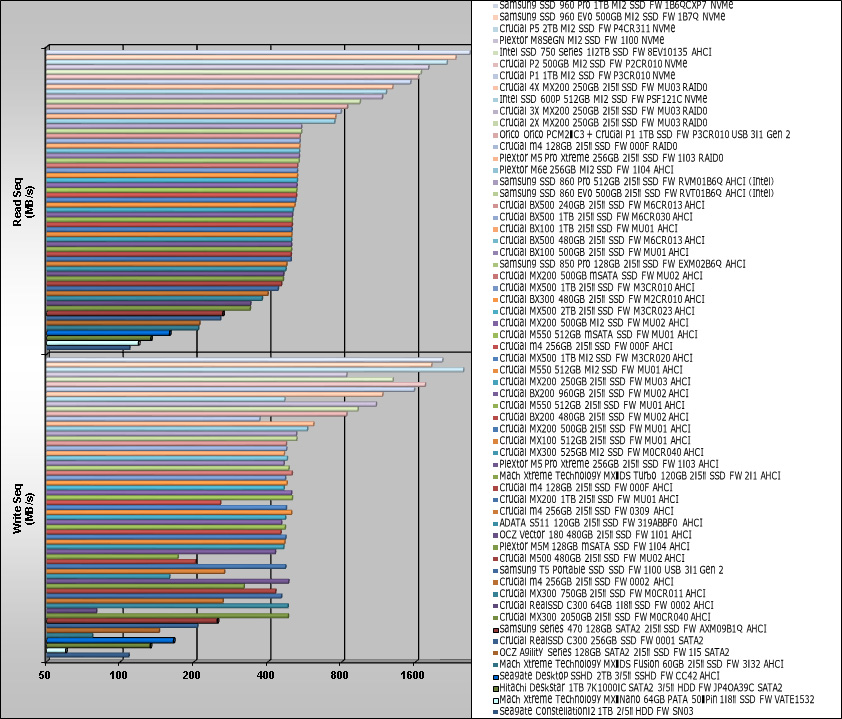
With the HD Tach benchmark values one can recognize the gradient of the performance. The Crucial RealSSD 64GB 1.8″ SSD shows no break-downs at all, but a very constant transfer with extremely low access times of approx. 0.1ms in IDE mode and approx. 0.2ms in AHCI mode. To compare these results with SATA3 values, you can move the cursor over this Crucial RealSSD 64GB SSD SATA3 AHCI link. Furthermore you can move the mouse over the following drives to see their respective benchmarkresults:Crucial RealSSD 256GB 2,5″ SSD SATA3 an SATA3,Crucial RealSSD 256GB 2,5″ SSD SATA3 an SATA2,OCZ Agility 128GB SSD andHitachi 7K1000.C 1TB Festplatte. And if you like to compare these very fast results of the 1.8″ SSD with a Toshiba MK8007GAH 1.8″ MCD-D50 PATA ZIF hard disk drive (Toshiba 50-Pin Embedded ATA also with 3.3 Volt, 4200 rpm), then you should move your mouse over this Toshiba MK8007GAH HDD link and get tears in your eyes when you own for example a Toshiba R400 Notebook with such a slow HDD. So it would be worth to upgrade such a HDD, but it would be necessary to use an adapter to upgrade the MK8007GAH HDD to the Crucial 1.8″ SSD, which would of course lower the very good transfer rates.
Here is a Snipping screenhot of the HD Tach benchmark values:
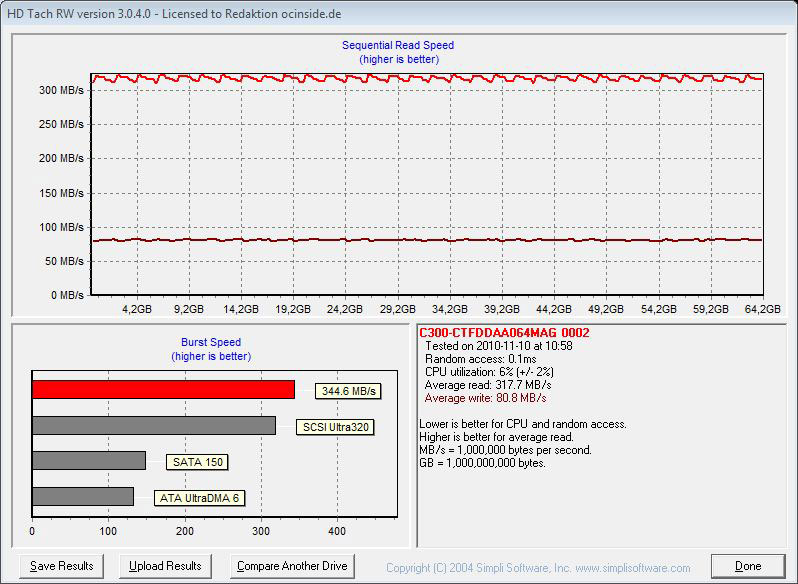
The comparison of the HD Tach benchmark results shows already very impressive, how fast the reading speed and the average access time of the Crucial RealSSD 64GB 1.8-inch SSD is against other Solid State Drives and hard disk drives.
Here is an impressive comparison of the HD Tach benchmark values, which are getting updated with soon coming drives:
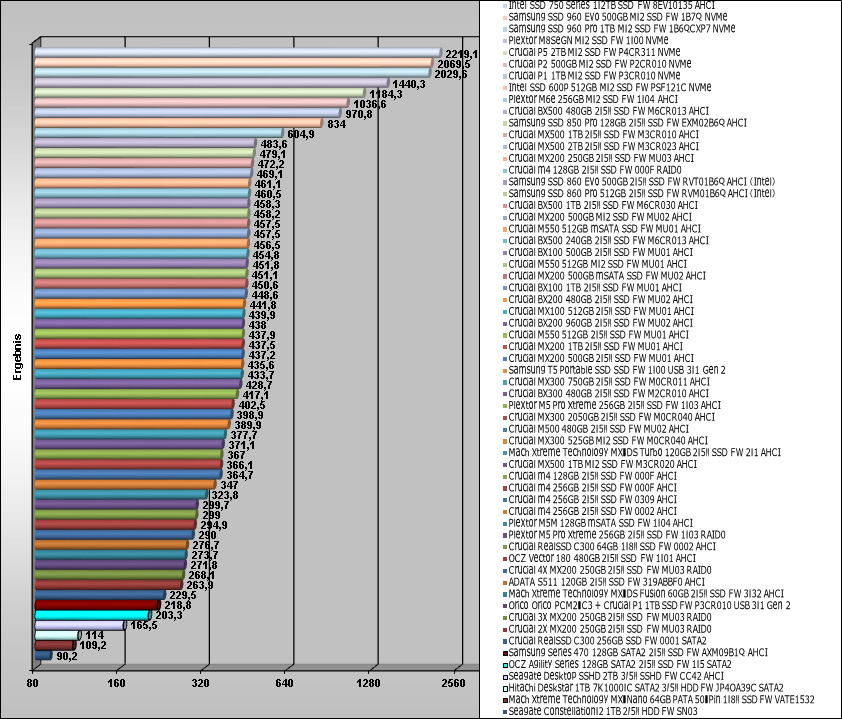
SiSoftware Sandra benchmark result
Of course, SiSoftware Sandra benchmark should not be missing in this test series. SiSoftware offers with their SiSoft Sandra program a very comprehensive tool for some years, which contains a lot of tools to get very reliable test results of all hardware components. The average access time of the Crucial RealSSD C300 64GB SSD was in SiSoftware Sandra with 167us relatively low and the drive index of 345.46 MB/s underscores once again the previous tests.
Here is a Snipping screenshot of the SiSoftware Sandra benchmark values (SATA3):
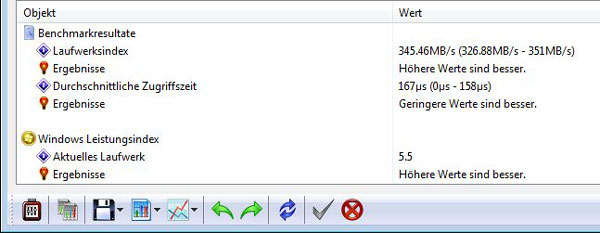
Here is a Snipping screenshot of the SiSoftware Sandra benchmark values (SATA3 AHCI):
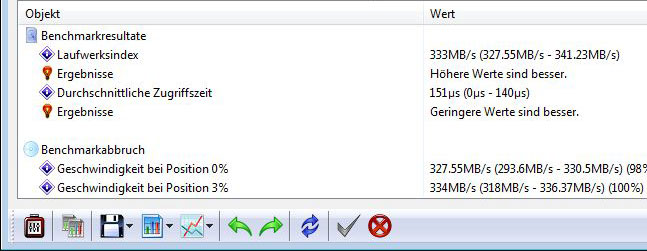
Here is a comparison of the SiSoftware Sandra benchmark values, which are getting updated with soon coming drives:
